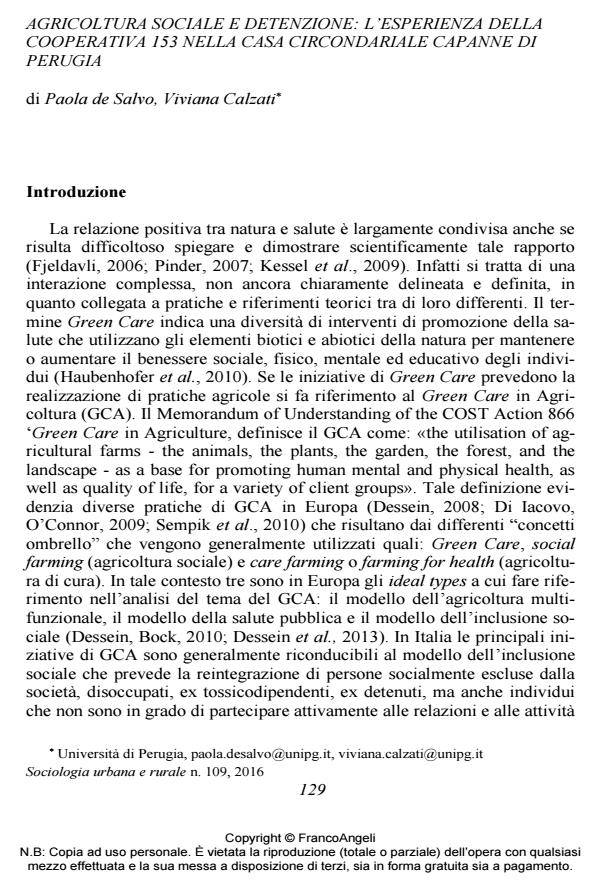Agricoltura sociale e detenzione: l’esperienza della Cooperativa 153 nella casa circondariale Capanne di Perugia
Titolo Rivista SOCIOLOGIA URBANA E RURALE
Autori/Curatori Paola de Salvo, Viviana Calzati
Anno di pubblicazione 2016 Fascicolo 2016/109
Lingua Italiano Numero pagine 18 P. 129-146 Dimensione file 489 KB
DOI 10.3280/SUR2016-109009
Il DOI è il codice a barre della proprietà intellettuale: per saperne di più
clicca qui
Qui sotto puoi vedere in anteprima la prima pagina di questo articolo.
Se questo articolo ti interessa, lo puoi acquistare (e scaricare in formato pdf) seguendo le facili indicazioni per acquistare il download credit. Acquista Download Credits per scaricare questo Articolo in formato PDF

FrancoAngeli è membro della Publishers International Linking Association, Inc (PILA)associazione indipendente e non profit per facilitare (attraverso i servizi tecnologici implementati da CrossRef.org) l’accesso degli studiosi ai contenuti digitali nelle pubblicazioni professionali e scientifiche
Nell’ultimo decennio numerosi studi hanno evidenziato la relazione dell’agricoltura con l’ambiente, con altri settori dell’economia e con la società. Queste nuove relazioni hanno attribuito all’agricoltura un diverso e più ampio ruolo rispetto a quello tradizionale. In particolare si indica infatti nella multifunzionalità la capacità dell’agricoltura di rispondere alle rinnovate esigenze/bisogni della società e dei consumatori. Il presente lavoro, dopo avere individuato i caratteri e gli aspetti definitori dell’agricoltura sociale si sofferma in particolare sul ruolo riabilitativo del lavoro agricolo per le persone private della libertà personale, individuandolo quale possibilità utile a migliorarne la qualità della vita e a promuoverne il futuro inserimento sociale e lavorativo. Il lavoro presenta il caso di studio della Cooperativa sociale 153, che ha creato un’impresa sociale per la gestione e valorizzazione dell’azienda agricola della casa circondariale di Perugia, Capanne.
Parole chiave:Agricoltura multifunzionale, agricoltura sociale, ruolo riabilitativo, detenzione, inclusione sociale e lavorativa, Cooperativa 153.
- Agricoltura Sociale e Servizio Sociale: analisi di un rapporto tra passato e presente Carlotta Mozzone, in WELFARE E ERGONOMIA 1/2025 pp.51
DOI: 10.3280/WE2025-001004
Paola de Salvo, Viviana Calzati, Agricoltura sociale e detenzione: l’esperienza della Cooperativa 153 nella casa circondariale Capanne di Perugia in "SOCIOLOGIA URBANA E RURALE" 109/2016, pp 129-146, DOI: 10.3280/SUR2016-109009